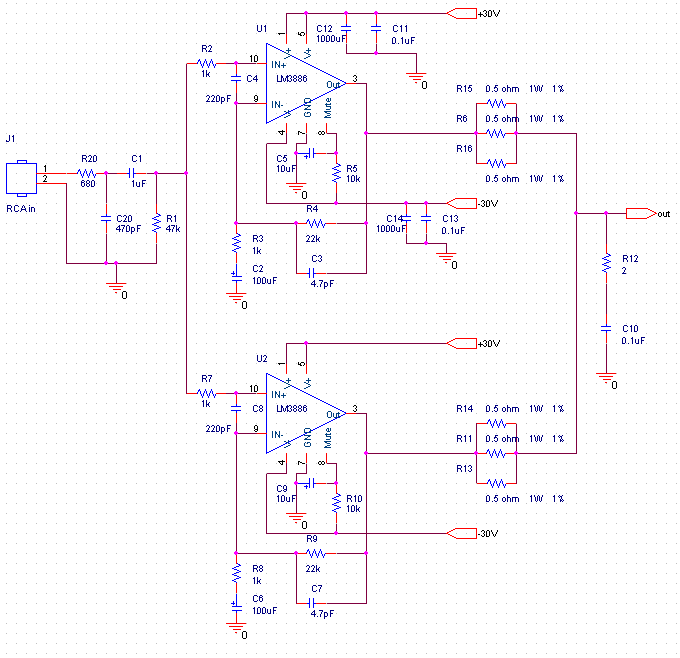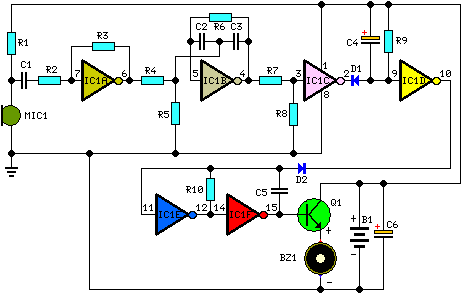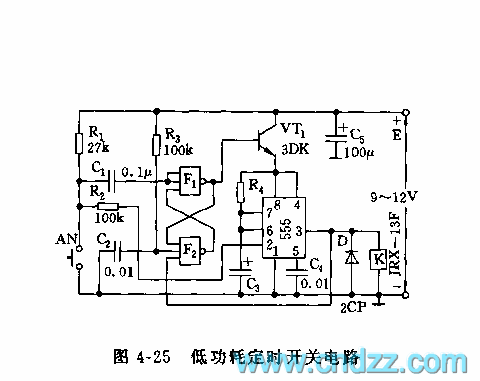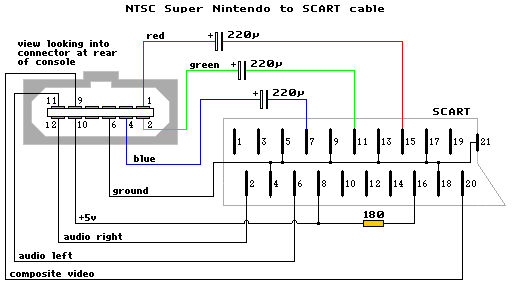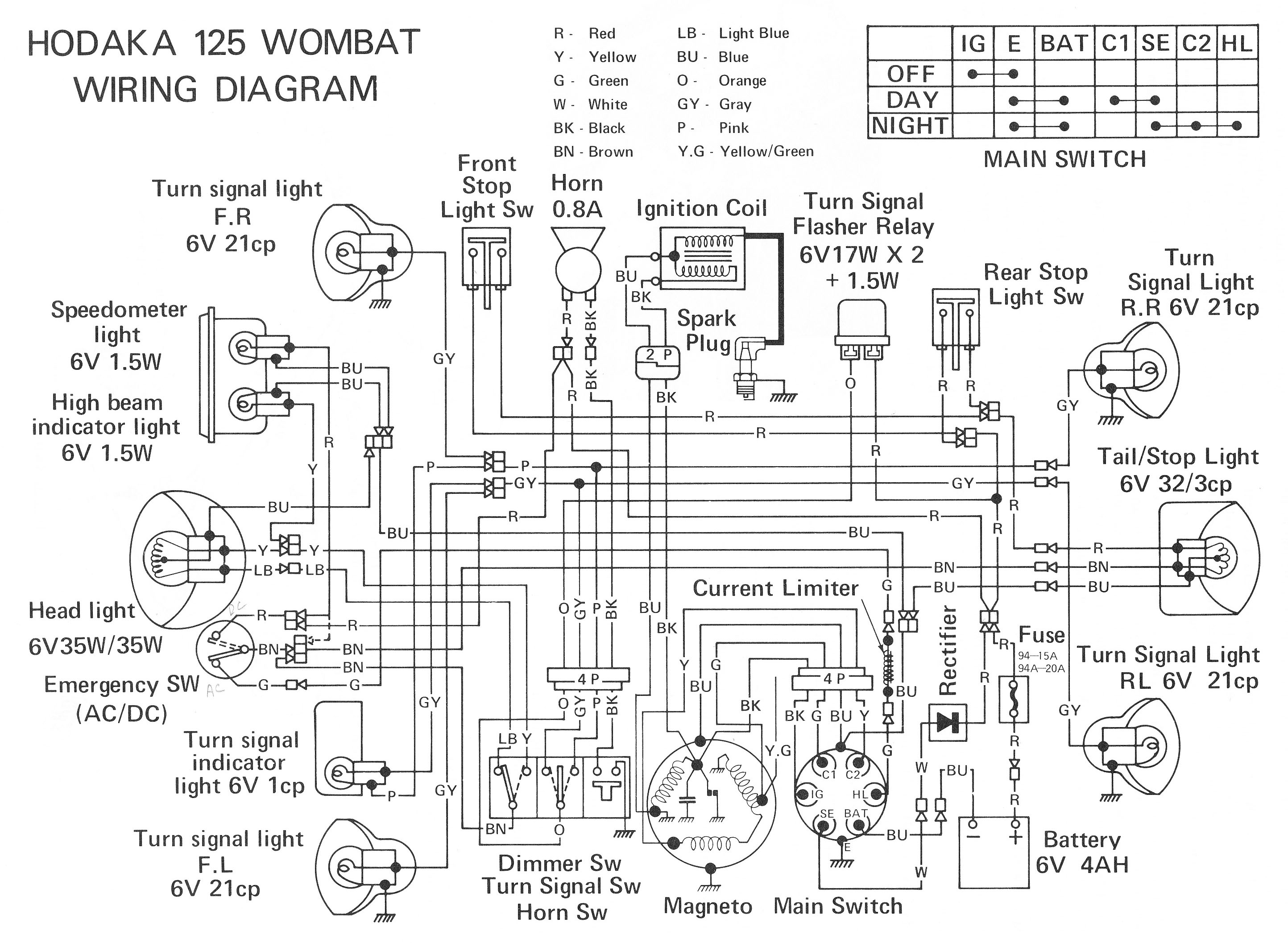
Schematic diagram of a USB player Schematic Diagram
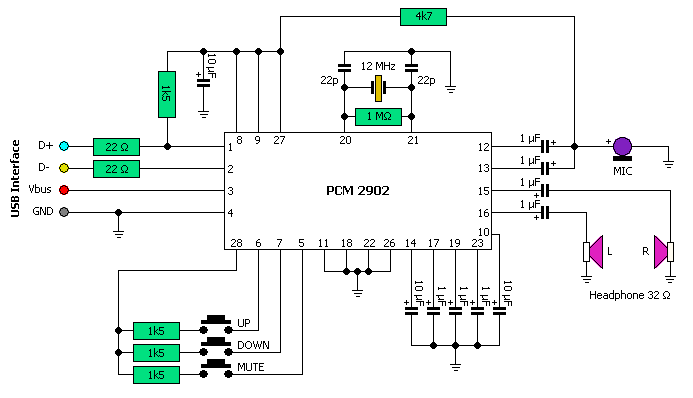
This USB circuit utilizes an integrated circuit (IC) to convert digital voice data into an analog format, making it suitable for headphone use. Additionally, the output can be amplified through a power amplifier, allowing the sound to be played through speakers. The IC employed in this circuit is the PCM2902, which serves as the converter for digital data to analog audio signals.
The USB circuit featuring the PCM2902 IC is designed to facilitate the conversion of digital audio signals from a USB source into analog signals suitable for audio playback. This process is essential for enabling devices such as headphones and speakers, which require analog input to function correctly.
The PCM2902 is a USB audio interface that integrates a stereo digital-to-analog converter (DAC), allowing for high-quality audio output. The circuit typically includes several key components:
1. **USB Interface**: The USB port acts as the primary input, where digital audio data is received from a computer or other USB-enabled device.
2. **PCM2902 IC**: This IC is the heart of the circuit, responsible for decoding the incoming digital audio signals. It converts the digital data into analog signals that can be sent to an audio output device.
3. **Low-Pass Filter**: After the DAC conversion, a low-pass filter may be implemented to smooth out the output signal, reducing high-frequency noise that could affect audio quality.
4. **Power Amplifier**: If the audio output is intended for speakers, a power amplifier circuit is included to boost the signal strength. This amplification ensures that the audio can be heard clearly at higher volumes.
5. **Output Connections**: The circuit features output connections for both headphones and speakers, allowing for versatile audio playback options.
The schematic diagram for this USB player circuit will typically illustrate the connections between these components, highlighting the flow of data from the USB interface through the PCM2902 and onto the output devices. Proper attention to component values and circuit layout is crucial for achieving optimal audio performance and minimizing distortion.In this usb circuit using an IC as a modifier of digital voice data into analog so that it can be applied to a headphone, or again through the power amlplifier strengthened so that it can be heard through the speakers. IC used in this circuit using IC PCM2902 as a modifier of a digital data into analog data storage. You are reading the Circuits of Schematic diagram of a USB player And this circuit permalink url it is 🔗 External reference
The USB circuit featuring the PCM2902 IC is designed to facilitate the conversion of digital audio signals from a USB source into analog signals suitable for audio playback. This process is essential for enabling devices such as headphones and speakers, which require analog input to function correctly.
The PCM2902 is a USB audio interface that integrates a stereo digital-to-analog converter (DAC), allowing for high-quality audio output. The circuit typically includes several key components:
1. **USB Interface**: The USB port acts as the primary input, where digital audio data is received from a computer or other USB-enabled device.
2. **PCM2902 IC**: This IC is the heart of the circuit, responsible for decoding the incoming digital audio signals. It converts the digital data into analog signals that can be sent to an audio output device.
3. **Low-Pass Filter**: After the DAC conversion, a low-pass filter may be implemented to smooth out the output signal, reducing high-frequency noise that could affect audio quality.
4. **Power Amplifier**: If the audio output is intended for speakers, a power amplifier circuit is included to boost the signal strength. This amplification ensures that the audio can be heard clearly at higher volumes.
5. **Output Connections**: The circuit features output connections for both headphones and speakers, allowing for versatile audio playback options.
The schematic diagram for this USB player circuit will typically illustrate the connections between these components, highlighting the flow of data from the USB interface through the PCM2902 and onto the output devices. Proper attention to component values and circuit layout is crucial for achieving optimal audio performance and minimizing distortion.In this usb circuit using an IC as a modifier of digital voice data into analog so that it can be applied to a headphone, or again through the power amlplifier strengthened so that it can be heard through the speakers. IC used in this circuit using IC PCM2902 as a modifier of a digital data into analog data storage. You are reading the Circuits of Schematic diagram of a USB player And this circuit permalink url it is 🔗 External reference
